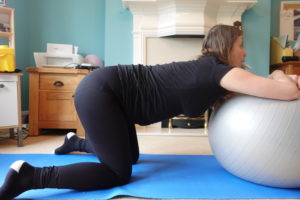Post-Natal Check Up
Giving birth is a big trauma for our body (Natural birth as well as C-section). You can feel overwhelm by your new role as a mum with your newborn and may not have time to think about you. However, it is essential to recover fully to be at your best for him/her!
During pregnancy, the body went through many transformations. Your ligaments and muscles have been stretched, your posture changed, you gain weight, ect. Now it is time to slowly go back to normal. It implies making sure everything went fine, nothing is blocked and if there were some issues (tear, episiotomy, diastasis…) to help them to recover properly.
Consequently, to check you entirely, we use two sessions (an osteopathic one and one with a women’s health physio). They will include:
Women’s Health Physio check
- Abdominal muscles: check for a diastasis (gap between rectus abdominus)
- Evaluation of good automatism when coughing, running,… most of the time, after a pregnancy your transverse muscle is weaker than before leading to a lack of abdominal control. This weakness is one of the reason of pelvic pain, incontinence, urgency…
- Check of c-section scar and teaching auto massage
- Check of episiotomy or tear scar and teaching massage (we explain this massage here)
- Evaluation of strength, endurance and functions of pelvic floor muscles
If you want to learn more about Pelvic Floor & Abdominal Rehabilitation follow the link:
https://myfrenchphysio.london/womenhealth-obstetric/why-a-pelvic-floor-rehabilitation-is-essential-after-every-pregnancy/
Osteopathic Check Up
- Check your posture (compensation, asymmetry, etc.)
- Joint movements especially your pelvic joints (sacro-iliac joints, pubis symphysis) which can lack movement or be inflamed
- Visceral Check: abdominal organs had very little space by the end of your pregnancy and giving birth (especially C-section) may have upset your digestive system and need a good reboot!
- Diaphragm and breathing check: as the diaphragm had to change is mechanic during pregnancy and now need to come back to its normal place.
If you want to already know if you have a diastasis, you can follow our instruction in this video:
And if you want to start some safe abdominal exercises to help you recover your abds! Our Post-Natal exercises palylist:



